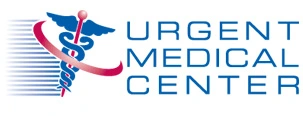Navigating the healthcare system can be confusing, especially in moments of stress or pain. One of the most common questions patients face is: “Should I go to urgent care or the emergency room?” While both facilities provide immediate medical attention, they are designed for very different situations. Understanding which one to choose can save you time, money, and stress—while ensuring you receive the right level of care.
The Role of Urgent Care
Urgent care centers, like Urgent Medical Center in Hollywood and Plantation, bridge the gap between your primary care provider and the hospital emergency room. These facilities are ideal for treating conditions that require prompt attention but are not life-threatening. Urgent care is designed for patients who can’t wait for a primary care appointment, need evening or weekend care, or are experiencing minor injuries or illnesses. Most urgent care clinics offer walk-in appointments, extended hours, and access to diagnostics like X-rays and lab tests. In many cases, patients receive treatment and return home within an hour.
Situations Ideal for Urgent Care
Urgent care is a great option for those experiencing common illnesses such as cold and flu symptoms, including fever, sore throat, coughing, congestion, or mild shortness of breath. It also serves patients with minor injuries like sprains, strains, small cuts, or bruises that may require stitches or professional bandaging. Skin conditions, such as mild burns, rashes, allergic reactions, and insect bites, can be evaluated and treated at urgent care.
If you’re dealing with infections—whether it’s a urinary tract infection, ear infection, pink eye, or sinus infection—urgent care can provide prompt prescriptions and relief. Mild to moderate asthma attacks, especially if the individual has a history of similar episodes, are typically manageable in an urgent care setting, provided the symptoms aren’t rapidly worsening. Additionally, vomiting or diarrhea that isn’t accompanied by severe dehydration can be treated efficiently outside of the ER.
Urgent care centers also perform physicals for work, school, and sports, along with administering routine vaccinations, including flu shots. Immigration medical exams are another common service, and many urgent care clinics are certified to handle the labs, X-rays, and documentation involved. For those dealing with chronic pain or joint issues, chiropractic care is often available onsite to help restore function and reduce discomfort. These visits are not only convenient but are typically more cost-effective than a trip to the emergency room, with most services covered by insurance and affordable self-pay options available.
When to Head to the Emergency Room
While urgent care is appropriate for many medical needs, the emergency room is essential when life or limb is at risk. The ER is equipped with specialized teams, equipment, and facilities to handle the most serious health crises.
You should go to the ER if you experience chest pain or pressure, especially if it is accompanied by shortness of breath, nausea, or pain radiating to the arm or jaw, as these are potential signs of a heart attack. Severe abdominal pain, particularly if it is sudden, intense, or located in the lower right quadrant, could indicate appendicitis or other critical conditions. Head injuries that involve loss of consciousness, confusion, or vomiting should always be assessed in an ER.
Sudden numbness, weakness, or difficulty speaking may indicate a stroke and require immediate attention. Heavy bleeding that doesn’t stop with pressure or involves significant blood loss needs emergency intervention. High fevers in infants, particularly those under three months of age, should be treated as urgent. Difficulty breathing, signs of a severe asthma attack or anaphylaxis, or any form of choking requires rapid response. Additionally, if you suspect a broken bone and notice a deformity or the bone has broken through the skin, or if someone experiences a seizure or convulsions, the emergency room is the right place to go.
Cost and Wait Time Considerations
One of the most noticeable differences between urgent care and the emergency room is cost. An ER visit can easily cost hundreds or even thousands of dollars, whereas most urgent care visits are considerably more affordable, especially for patients with insurance. For uninsured patients, urgent care centers like Urgent Medical Center offer self-pay plans that help keep expenses manageable.
Wait times are another factor to consider. Patients at urgent care clinics are often seen in under 30 minutes, making the experience far more efficient than the ER, where critical cases are prioritized and those with less severe conditions may face long delays.
Making the Right Choice for Your Health
Choosing between urgent care and the ER doesn’t have to be a guessing game. By assessing the severity, duration, and nature of your symptoms, you can make an informed decision. When in doubt, it’s always better to err on the side of caution—but in many situations, urgent care can provide the fast, affordable, and effective treatment you need.
At Urgent Medical Center, we’re committed to delivering high-quality, compassionate care for non-life-threatening conditions. Our team of healthcare professionals, including board-certified physicians and experienced staff, is here to help you feel better—fast.
For more information or to find your nearest location, visit urgentcarefl.com.





